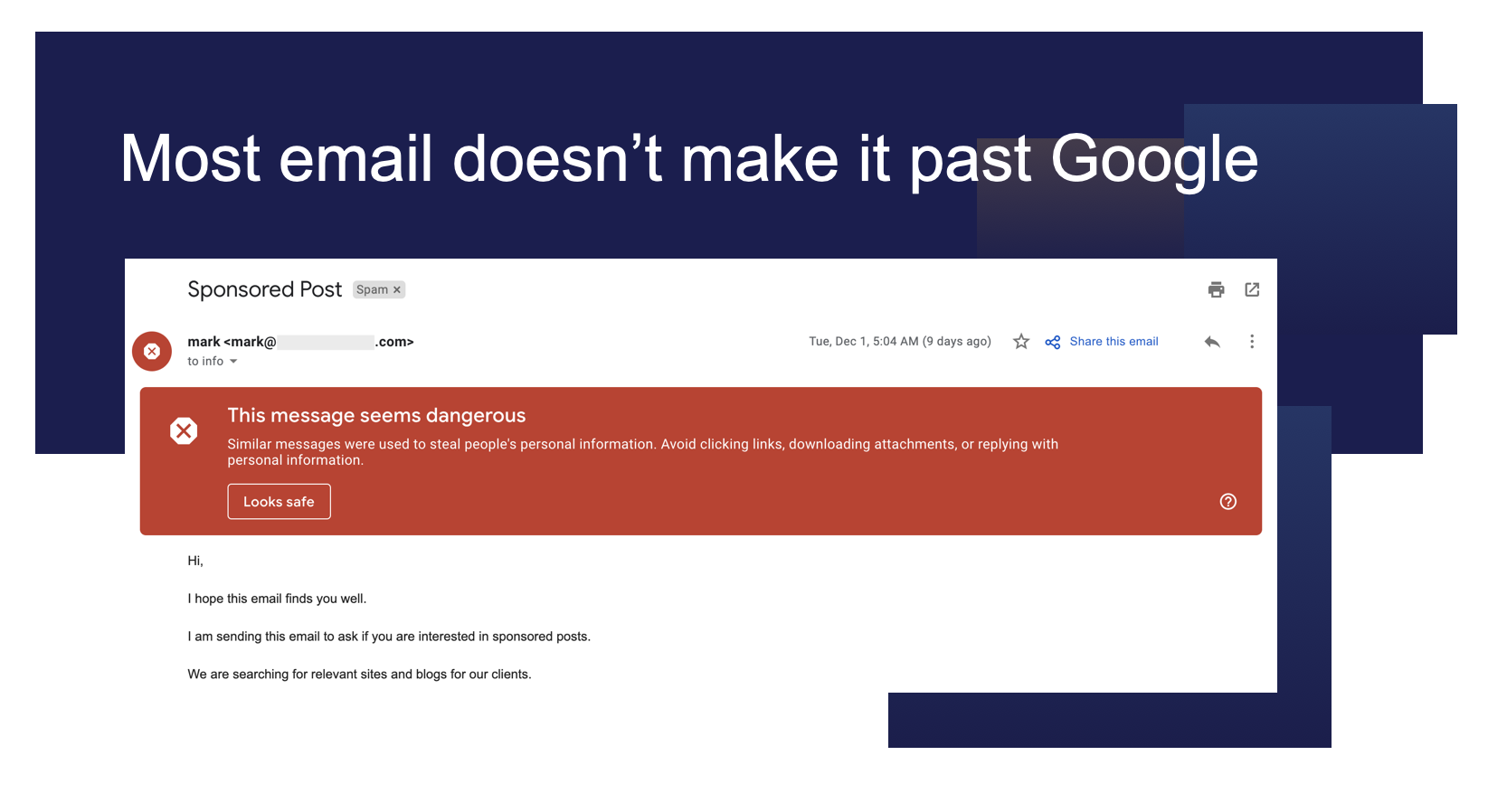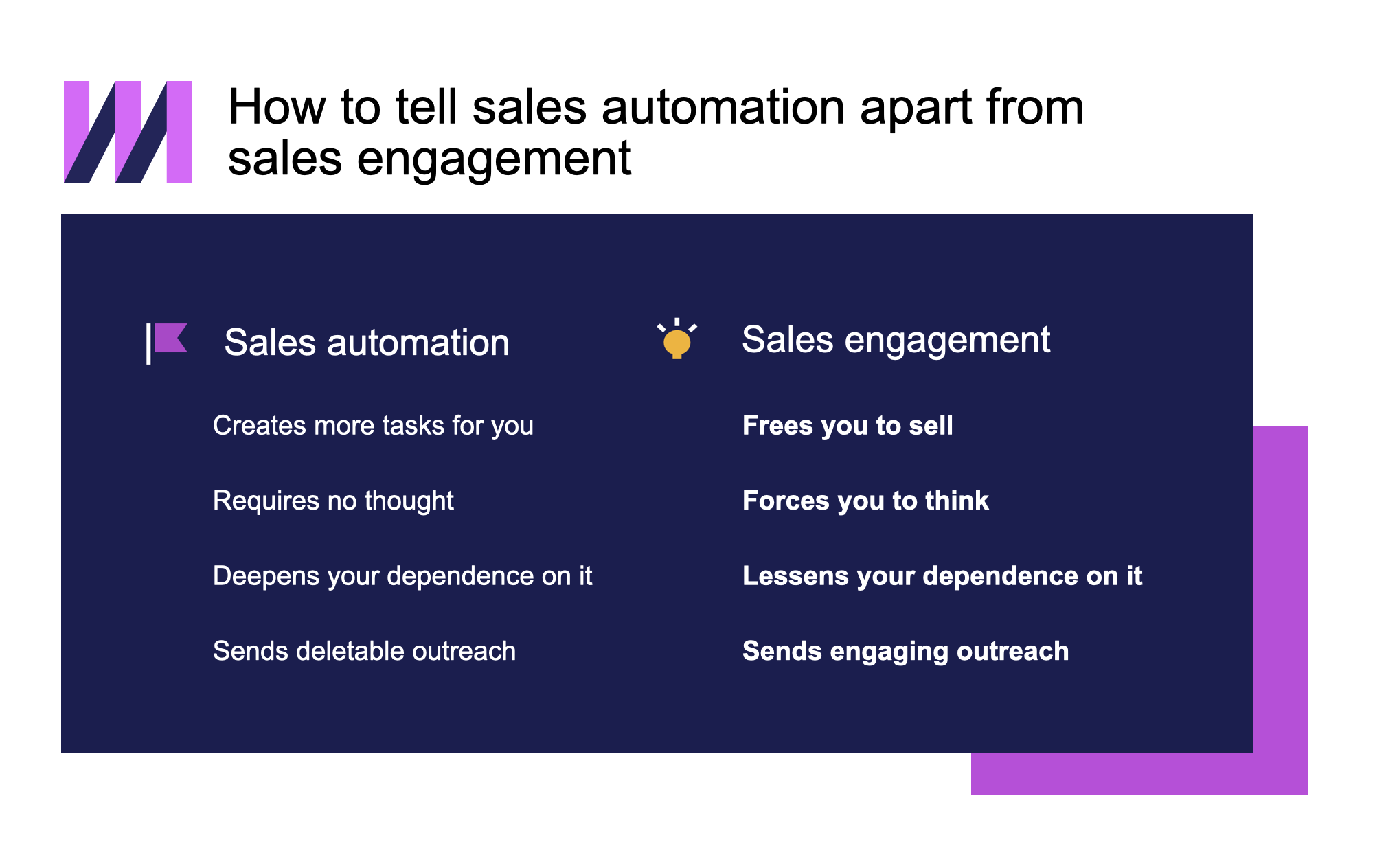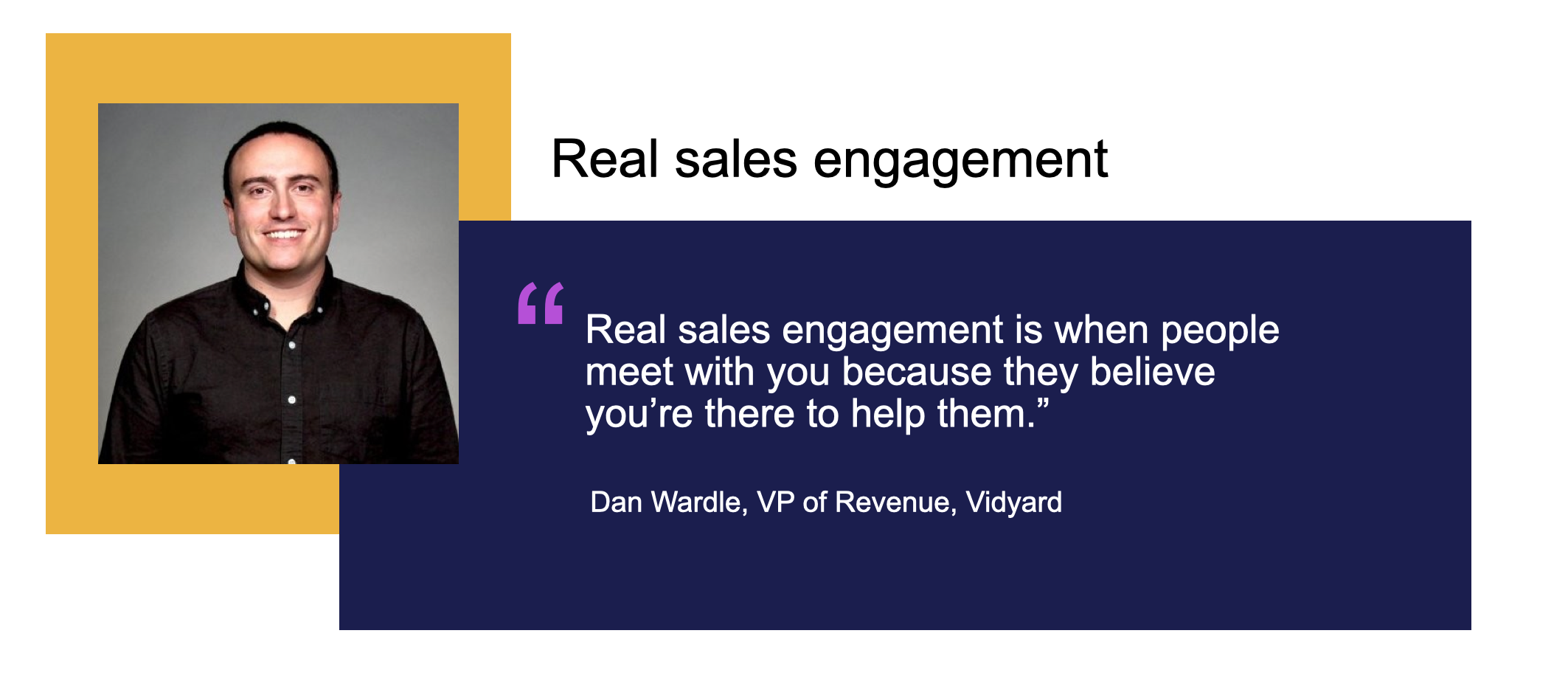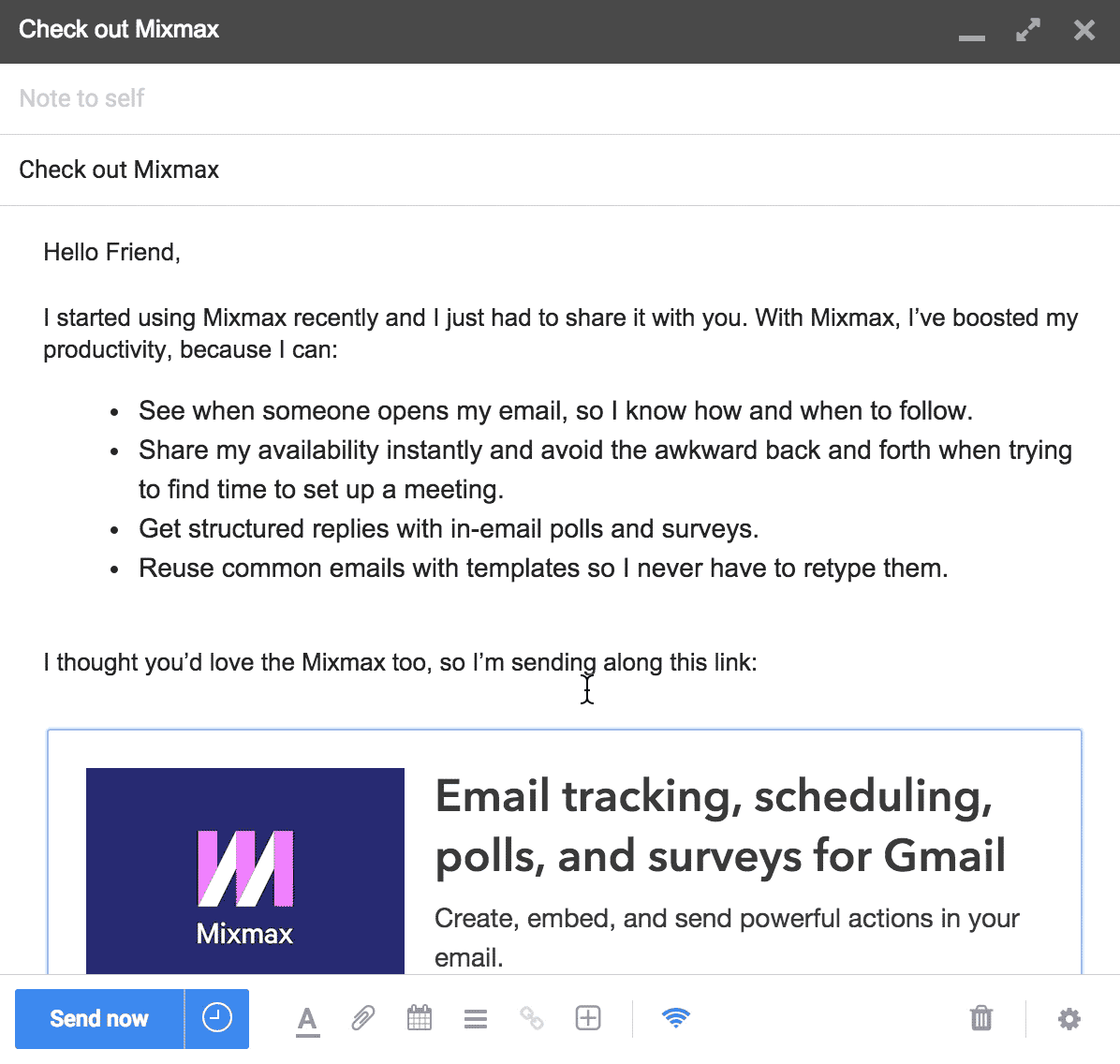Salespeople today are drowning in new software. I say ‘drowning’ because it’s not all positive. They’re both spoiled for choice and starved for results—reps have never had so much sales engagement software, yet the data suggests they’re no more effective than their touch-tone phone-wielding counterparts of the early 1990s.
So what gives? The sales engagement revolution got co-opted. Platforms that appeared to save people time accidentally created more work. At the heart the problem is software masquerading as “sales engagement” that appears to make life easier while in fact making it harder—creating notifications and tasks, but not more meetings.
The best way to combat this trend? Notice it, and free yourself from the tangle of too much software by practicing what the Mixmax team and I are calling “lean sales.” It is the only way we’re finding that we can still engage people.
Too Much Software, Too Little Trust
Drop in on a team of sales development reps (SDRs) talking about outreach today and you could be forgiven for thinking they were a bunch of email marketers. Their conversations are riddled with talk of open rates, clicks, and, most worrying, volume. Software has allowed them to send thousands of emails at a time. It’s blurred the line between them and email marketing and it’s part of why prospects receive an average of 140 emails and 72 other messages every day.
But “scale” should be an anathema to those seeking true engagement from their prospects. The origin of that word “engagement” means “to pledge one’s self to a cause”—to say, “I’m all in. You have my attention.” In the medieval sense, it was someone joining an army. Today, it’s someone joining an evaluation.
The origin of that word “engagement” means “to pledge one’s self to a cause
As most of us well know, poorly personalized mass emails are very unlikely to elicit anything like a pledge. Yet we fall into the trap of doing more and more of it because sales engagement software allows it.

Press button, send email.
Related Post: Your Essential Sales Glossary—The 99 Terms You Need to Know
But once you realize that most of what’s sold as sales “engagement” software is actually sales “automation” software—designed to increase your activity, not the quality of interactions—your thinking changes. You start to understand that all the old-school sales leaders who bark at new reps to ‘hit the phones’ actually have a point.
If outreach is easy—if it can be “scaled” with the push of a button and requires no thought—it’s been stripped of the thoughtfulness that helps you stand out in a sea of sameness. Prospects can tell, and they delete it without reading.

True sales engagement software is a rarity. It’s because that software isn’t designed to keep reps within its interface managing workflows, but to keep you out of it—managing the real deal. Fake sales engagement software creates a job for itself. Because, when you aren’t closing deals, you think what you need is a bigger email cannon and more meetings. And the more mass emails you send, the more people ignore you, and the cycle perpetuates.
As I explain next, it’s time to ditch all the heavy firepower and practice lean sales.
Related Post: 7 Best Sales Engagement Platforms: Reviews, Features & Pricing
How Our Team Got Better Sales Engagement by Going Lean
Do your sales tools make people want to pledge themselves to an evaluation? In almost all cases, the answer is no. Tools can’t really do that. Only clever people can, and only when they aren’t sending outreach that’s obviously templated, or managing so many workflows that they’re slow to reply. (The average response time is 12 hours, yet 88% of prospects expect a response within 60 minutes.)
Shedding unnecessary platforms and plug-ins is what we call “lean sales.” Lean means getting back to basics. It means doing less, but doing it better. If you’re practicing lean sales, you:
- Don’t build a big tech stack—you build a minimum viable one that keeps your outreach human
- Only adopt sales engagement tools when they solve a specific problem
- Prefer systems that are multi-purpose
- Eliminate all unnecessary notifications
- Reduce the number of interfaces you have to switch between
- Only automate tasks that a human (like you) can’t do better
In the lean sales method, tools are measured not by how much outreach they help you send, but by how they increase the quality of your outreach.
It may go without saying, but with this approach, you should measure your tools not by how much outreach they help you send, but by how much they increase the quality of your outreach. The right tools might do that by:
- Providing a highly relevant reason to reach out
- Telling you exactly who opened an email on an email chain
- Helping you always get the person’s name right
- Automating routine follow-ups, like meeting reminders
- Cleaning up links in emails so they display as clickable cards
- Sending more engaging messages via GIFs or video
- Freeing you up to think more by updating the CRM automatically
Sales engagement is about sending more delightful, tactful, and effective outreach that actually earns a response. “The pinnacle of engagement means that your salesperson gets a response to EVERY outreach they send to that buyer,” says Dan Wardle, VP of Revenue at the video sales platform Vidyard. “The prospect is willing to meet with you regularly because they believe in your product and the value it will bring to their business, but most importantly, they believe that your salesperson is there to help them.”
Real sales engagement software doesn’t look or feel like software at all.

How to Build for Better Sales Engagement
So what can you do differently? Rather than build a “stack” of sales software that helps you hit every channel, instead ask, “What would help me have better interactions?” True sales engagement software should free you from routine things like sending follow-up emails so you can spend more time researching each prospect before you hit send.
Take our software Mixmax, for example. It’s designed to be lightweight and non-intrusive—rather than giving you a whole new window with which to switch back and forth between, it operates out of Gmail. Each feature is designed to save time, and reduce the number of workflows you have to manage, not increase them.

Here are ways our team uses Mixmax’s sales engagement software to achieve higher engagement:
- Automate follow-ups: Sales reps spend 12% of their time following up with prospects. Often, it’s not the prospect’s fault. They’re busy. And on second and third touches, it’s not what you say. It’s the fact that you reached out. With a good sales engagement software, you should be able to send one outreach email and know that if they don’t reply, there’ll be 1-5 follow up emails until they do.
- Eliminate scheduling back and forth: Figuring out what time someone is free is neither fun nor necessary. Sales engagement software can give you a link that lets them book on your calendar in one-click. Or, you can insert open times directly into an email.
- Make your emails easier to reply to: Rather than force prospects to draft a response, put buttons in your email so you can ask, “Are you interested? Yes / No.”
- Track engagement: Know when people open your email, share it, or open attachments, in real-time. (And know who on a thread opened the email, so you don’t have to guess.) And ideally, get those notifications where you need them, in Slack.
- Get insights: Which of your emails get the most opens? At what times? With what subject lines? Like a good manager, sales engagement software can tell you what to keep doing and what to stop doing.
When your emails are richer, more thoughtful, and easier to reply to, more people respond. The recruiting startup Hiretual earned a 70% open rate on its emails. Trendalytics saved 65 hours each month with simple calendaring, and Rainforest found it earned 50% reply rates. If that’s not a clear “pledge” of interest, I don’t know what is.
Related Post: Personalization vs. Automation: Finding the Right Balance in Sales
The Best (True) Sales Engagement Software
I think of these tools as the essential three of our outreach—the trifecta of sales engagement.
Send less, but more thoughtful and convenient, emails
Mixmax lets you send cadences that don’t feel like cadences, where you spend lots of time writing the first email for maximum effect, but trust that the automated follow-ups will cover you if needed. Mixmax has over 24 tools for engagement, built right within Gmail so you don’t have to leave the interface, to send GIFs, polls, PDFs, and ask multiple choice questions where the prospect only has to click a button to respond.
Related Post: 18 Open-Ended Sales Engagement Questions That Help Close Deals Faster
Build connections at a distance with video messages
Vidyard gives you a Chrome extension with which you can record and send quick videos. You can also save and reuse videos, and insert them into your Mixmax sequences.
Call faster with better intel
Dialpad puts your dialing on autopilot so you can ignore all the distractions of looking up and dialing numbers and instead, focus on the quality of the call. Dialpad records your calls, and can give you insights. For instance, if you talked for too long, or mentioned something that disinterested them, it can give you alerts.
If you have Mixmax, you can use the Dialpad + Mixmax integration to make one-click dials from within Gmail.
So. What’s Next?
Practice lean sales. Use less software, and evaluate it based not on how it helps you achieve volume or “scale,” but on how it helps in ratchet up the quality of your interactions. People are inundated with poorly personalized messages. The best thing you can do to earn true sales engagement—a pledge that someone is willing to evaluate—is to do less, but do it better.





